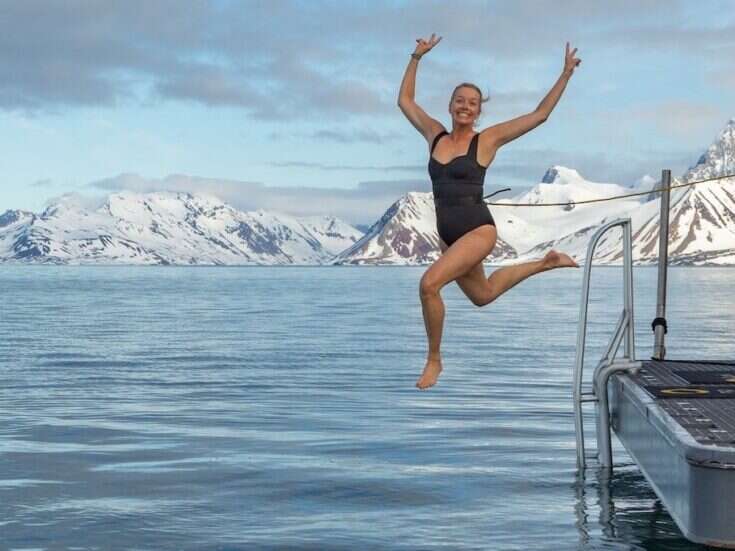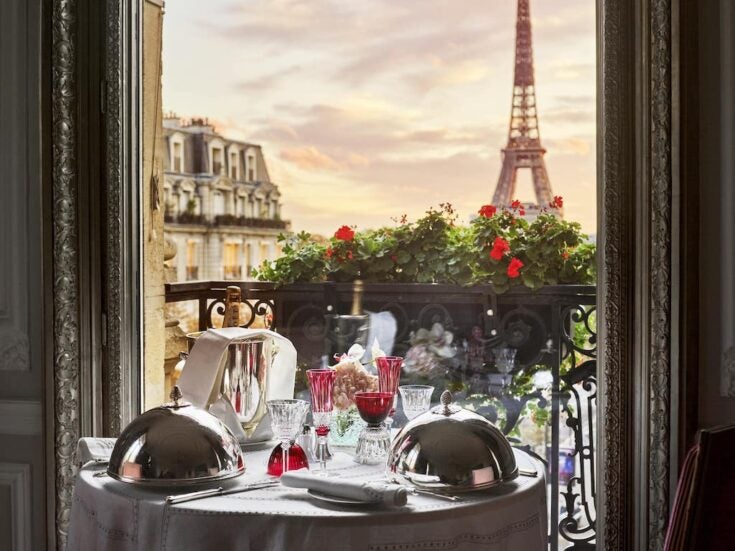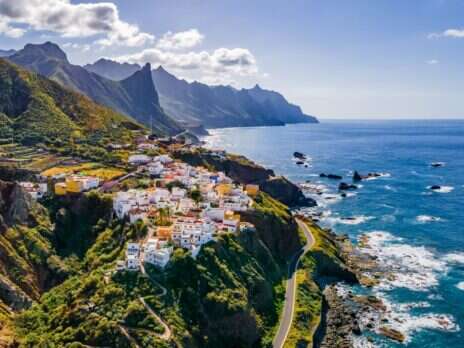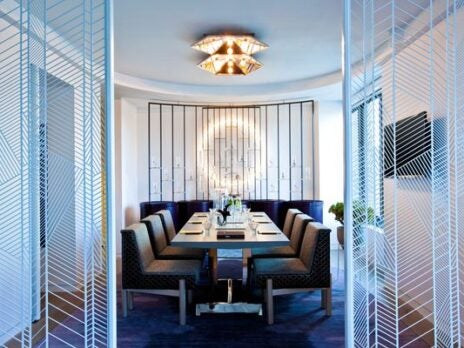MILAN – Umbria is celebrating the arrival of a new theatre, soon to be a permanent theatrical venue, to be inaugurated in Solomeo (Pg) in September with the premiere of the show Nel Bosco degli Spiriti (“In the Forest of the Spirits”) by Luca Ronconi, Ludovico Einaudi and Cesare Mazzonis.
This is the Cucinelli Theatre, a project launched by the Umbrian entrepreneur-philosopher who lent his name to the theatre.
“This Theatre, to which I have devoted a significant part of my work and my passion, is the highly expressive symbol of the illuminist ideals that I cultivate – in keeping with the message of the saints Francis of Assisi and Benedict – to improve mankind through the redemption and the ascertainment of human values along with those of art and spirituality,” affirms Cucinelli.
The Cucinelli Theatre began as an important part of the development programme of the Village of Solomeo, an initiative that was conceived and planned by the entrepreneur, carried out over the years with a series of improvement and restoration projects on the medieval castle, which also serves as home to the cashmere company by the same name, the 18th-century Park of Villa Antinori, Piazza della Pace square and, today, the Forum of the Arts. The latter is an extraordinary complex of buildings, which includes, in addition to the theatre, a Hippodrome (which seats approximately 500) and a Gymnasium: a large expanse of gardens and landscapes, designed in accordance with ancient models, created to promote spiritual encounters and exchanges in the great tradition of classical culture.
The building that houses the theatre is 50 metres in length, 18 metres in width and 12 in height. Its elegant and measured Renaissance forms, inspired by the models of the theatres of Sabbioneta (V. Scamozzi, 1588-90) and the Farnese of Parma (G. B. Aleotti, 1618), are the living symbols of the Italian and European cultural moment that exalted the humanistic values honoured here. The theatre can seat up to 240 spectators.
“As a whole, these works,” adds Cucinelli, “were created in following with an itinerary that is the earthly reflection of a corresponding metaphysical path, destined to celebrate the non-material values of Man”.
The theatre’s activities will begin with the show Il Bosco degli Spiriti, brought to the stage by Luca Ronconi, written by Cesare Mazzonis, featuring music by Ludovico Einaudi. The show was created by combining two short novels by the Nigerian writer Amos Tutuola, where the fable lives alongside the news, where the myth meets the picaresque tale and the ancestral and the tribal are faced with contemporary facts and customs. Encounters which, in this context, become hilarious.
“Nel Bosco degli Spiriti – a grotesque chimera created by assembling the two aforementioned tales, specially conceived for the baptismal rite of the newborn theatre of Solomeo, a seductive utopia and the fruit of the dreams, curiosity and versatile eclecticism of Brunello Cucinelli. A story that originated in a faraway place, in the heart of mysterious Africa. But there is nothing ethnic in our show and nothing prodigiously imaginative”, explains Luca Ronconi. “Allusions to the exotic are clearly made only at times, opportunely deviated and ‘en travesti’ or, at the most, a tasty ingredient in a succulent dramatic casserole based on a recipe that is a variation of the myth”.
The musical language of Nel Bosco degli Spiriti is a project by Ludovico Einaudi, a refined interpreter of the great koinè contemporary sound. Ronconi observes once again “If for certain aspects music is in itself a direct reverberation of the rhythm of the fable (in the mobility of its syntax, in its pushing to the extreme limits of rationality and emotion, in some of its passionate improvisational plays), then the song can serve as the bridge between the words and the music. Dance can also act as the music’s link with the scenic action, in a stimulating reflection around new ways and the new possibilities of musical theatre”.
“My past experiences with African music,” adds Ludovico Einaudi, “brought me into contact with a culture that even today has a direct and extremely active connection with a very ancient history, which is lost in time. This is the reason why, when I read Tutuola’s book, I saw the same fairytale-like nature that I found in the ancient dance tunes sung by the griot, the praise singers and wandering musicians of Western Africa. For the music of Nel Bosco degli Spiriti I brought together a group of musicians with different backgrounds, some from Africa and others from the west. Ethnic instruments, a piano, other instruments invented using barrels, bicycle parts, fans, shells, whistles, anvils and hammers together with electronic instruments, in a palette of colours that creates the musically entangled forest inhabited by the horrible creatures described by Tutuola”.
INTRODUCTION
Throughout my life I have nurtured a dream: one in which work is useful for an important purpose.
I sensed that company profit alone was not sufficient to realise this dream of mine, and that a higher aim had to be sought.
The spirituality of the great thinkers of the past, of saints and poets, beyond dogmas and doctrines, indicated without a shadow of a doubt and without exception a single truly great value: that of man.
I listened to the wise and moving words of Saint Francis, Socrates and Seneca and realised that economic value is nothing without human value, and that the latter cannot, therefore, be set aside.
Only by recognising the spiritual nature of the human situation is it possible to assign to man his proper role in the world and understand the real nature of this role.
Work, thus understood as an expression of human value, itself becomes a participant in spirituality, and achieves the higher aim of true good, not least through scrupulous respect for the company.
All this, which allows for the reclamation of the infallible guides of passion, courage and serenity, is what I understand by the term humanistic enterprise.
The divine order, embodied in the praxis of human industry, makes intelligible to irrational awareness the fine yet strong thread which binds together Nature, Art and the Soul; from the moment Art entered my life, I recognised it as a necessary resource rather than merely as a highly-refined accessory.
Working towards that good which transcends the physical allows me to fathom the Genius of Nature, and to collaborate with it through work. I believe that each one of us, by means of our own individual work, interacts with the environment of which we are part, and I feel, for my part, that I too am responsible for the beauties of the world.
Brunello Cucinelli
THE HISTORY
About twentyfive years ago, at the start of his career, Brunello Cucinelli chose Solomeo as the location that was eventually to become the headquarters of his humanistic business enterprises. It is here, in this medieval village near Assisi, where the wind still gently carries the spirituality that inspired the Ora et Labora of St Benedetto of Norcia and the mysticism of St Francesco, that a new concept of work and the desire to live in joyful harmony with nature are developing.
This different way of conceiving a business enterprise is at the same time both modern and old, and in it Brunello Cucinelli has identified a model that will be employed in the future.
For this reason he has dedicated himself fully to the task of carefully restoring the ancient village of Solomeo. It has 400 inhabitants and consists of a small medieval cluster of houses which were built at the end of the fourteenth century. There is a castle, which is where the company is based, a church, a village square and the old village farm, recently restored and transformed into a comfortable villa where cultural events are held and where the company cafeteria is situated. The village represents the meeting place where one can rediscover the importance and value of one’s individuality and the joy of living and working together with others.
At Solomeo the creativity of each individual employed in the workshops is part of the common good, and there is no room for things such as clocking on, certificates, trade unions.
It is here that Brunello, with great skill, develops the relationship between colours and cashmere. The cashmere is then exported all over the world where it takes its place alongside the more traditional products made in this elegant material.
United in the single humanistic enterprise that Cucinelli has created, three distinct, highly-specialised brands have grown under the aegis of Solomeo’s fourteenth-century coat of arms: Brunello Cucinelli Cashmere, founded in 1978 to produce cashmere; Rivamonti, women’s knitwear; and Gunex, with its line of women’s skirts and trousers.
These craft workshops, like ancient medieval builders’ workshops, do not have proprietors, only workers with different roles and responsibilities. True creative workshops, they are the vital force that produces the ideas which, renewed each year, are then exported all over the world.







